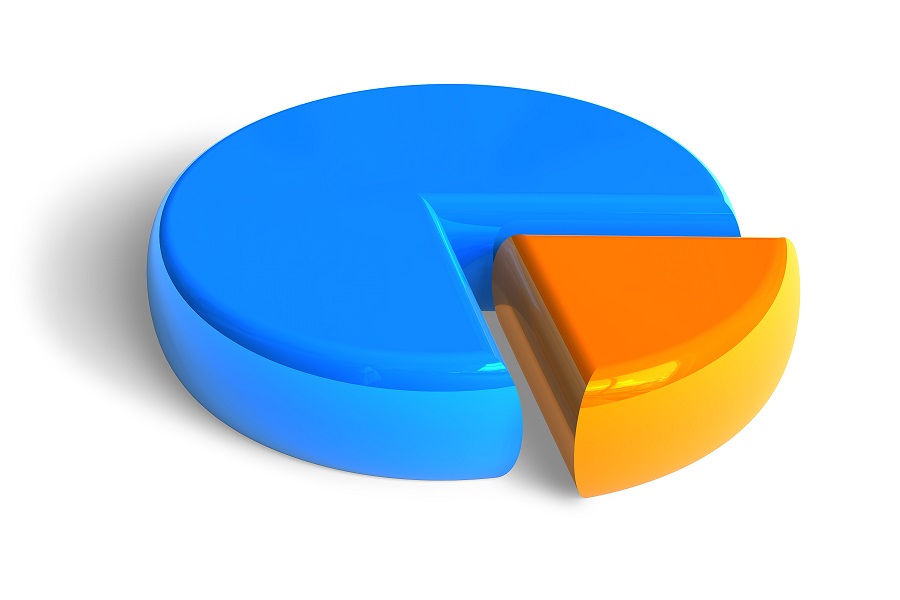What Is Debt-to-Income Ratio, and How Does It Affect Your Ability To Get a Loan?

Though your debt-to-income ratio does not factor into your credit score, it does influence lenders’ decisions when determining whether to qualify you for a loan. Your debt-to-income ratio compares how much you owe each month to how much you make. Expressed as a percentage, your DTI tells lenders whether you can really afford a loan and if you are in a financial position to repay it.
Calculating Your Debt-to-Income Ratio
Calculating your debt-to-income ratio is fairly
straightforward and can be done in two steps. The first involves adding up all
of your monthly debts. Those include the following payments:
• Mortgage or rent
• Auto, personal and student loans
• Minimum monthly credit card bills
• Child support and alimony obligations
• Any other debt payment that may show up on your
credit report
Next, divide the sum of your monthly debt obligations by
your total gross monthly income. Convert the number you get into a percentage.
That is your DTI.
Bear in mind that your typical non-fixed monthly expenses do
not factor into your DTI. Those include grocery bills, health care expenses,
insurance premiums, utility bills, daycare expenses, etc. When deciding whether
you can afford a loan or mortgage, a lender will not consider these costs.
However, that does not mean that you should not consider them yourself. You may
qualify for a $350,000 mortgage, but would you be able to maintain your current
lifestyle and also afford your monthly mortgage payment on your current income?
Front-End vs. Back
End DTI
Unfortunately, when applying for a mortgage, an additional
layer of complexity gets added to the equation, as lenders consider not one but
two types of DTI:
• Front-End
Ratio: This ratio, also called the housing ratio, tells lenders what
percentage of your gross monthly income would go to your housing expenses,
including your mortgage payment, homeowners’ insurance, property taxes and, if
applicable, homeowners’ association fees.
• Back-End
Ratio: The back-end ratio tells lenders what portion of your income would
be needed to cover your existing financial obligations in addition to your
mortgage and housing payments. Existing financial obligations may include auto
loans, childcare expenses, student loan payments, credit card bills and other
revolving debt.
An Ideal
Debt-to-Income Ratio
Though DTI preferences vary from lender to lender, most
prefer for a front-end debt-to-income ratio to be at or below 28%. The back-end
ratio, including all expenses, should not exceed 36%. However, most lenders
don’t base their final decisions on DTI alone. Many consider DTI in addition to
an applicant’s credit score, down payment, savings and assets. Some may accept
a higher debt-to-income ratio if the amount a person wants to borrow is
minimal.
Though you should strive to keep your DTI at or below 36%,
lenders who offer conventional loans backed by Freddie Mac and Fannie Mae now
accept DTI ratios as high as 50%. However, a DTI that high can significantly
limit your lending options and result in higher interest rates.
DTI and Your Credit
Score
Your debt-to-income ratio does not directly factor into your
credit score. However, the amount of debt you have is directly related to other
factors that influence your credit score, including your credit utilization
rate. This rate compares the amount of revolving debt you have with how much
you have available. A high DTI likely means you have a high credit utilization
ratio, which could negatively impact your score.
How To Improve Your
Debt-to-Income Ratio
Your debt-to-income ratio may not directly affect your
credit score, but it can negatively impact how creditors view you. For this
latter reason, you should work on attaining a low DTI, especially if you hope
to buy a home soon. Some steps you can take to begin reducing your
debt-to-income ratio are as follows:
• Reduce your total debt by paying down credit
card balances, other forms of revolving debt and loans.
• Avoid creating new debt for yourself. If you
can’t afford to pay for something in cash, you can’t afford it.
• Make your debt more affordable by calling your
lenders and asking them to adjust your interest rates, consolidating your debt
via a low-interest credit card or taking out a personal loan.
• Try to earn more each month, either through a
side job or part-time gig or asking for a raise.
• Review your budget to look for areas where you
can save. Then, use that money to pay down your debt faster.
Reducing your debt-to-income ratio basically involves paying
down your debt. If the amount you owe each month exceeds what you make, it may
be time to seriously consider cutting back on your expenses, taking up a side
job or both — at least for the time being.
How Your DTI May
Affect Your Ability To Get a Loan
When you apply for a large loan such as a mortgage loan,
lenders look at your credit score, your credit history and your debt-to-income
ratio. They use this aggregate information to gain a better understanding of
the type of borrower you are and your ability to repay. For this reason, though
your DTI doesn’t directly affect your credit score, it is something you should
work to reduce. If you need financial assistance doing so, shop for a low-interest personal loan today.
debtincomedtimortgageexpensesloansinterest rates
